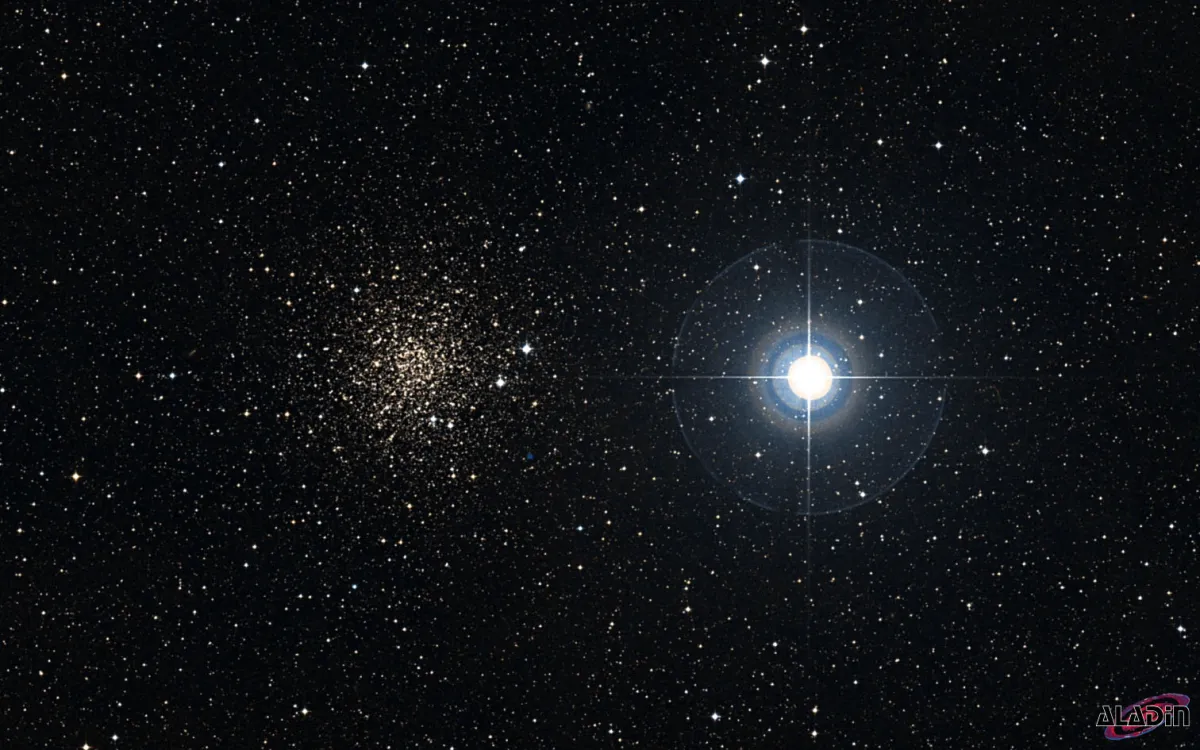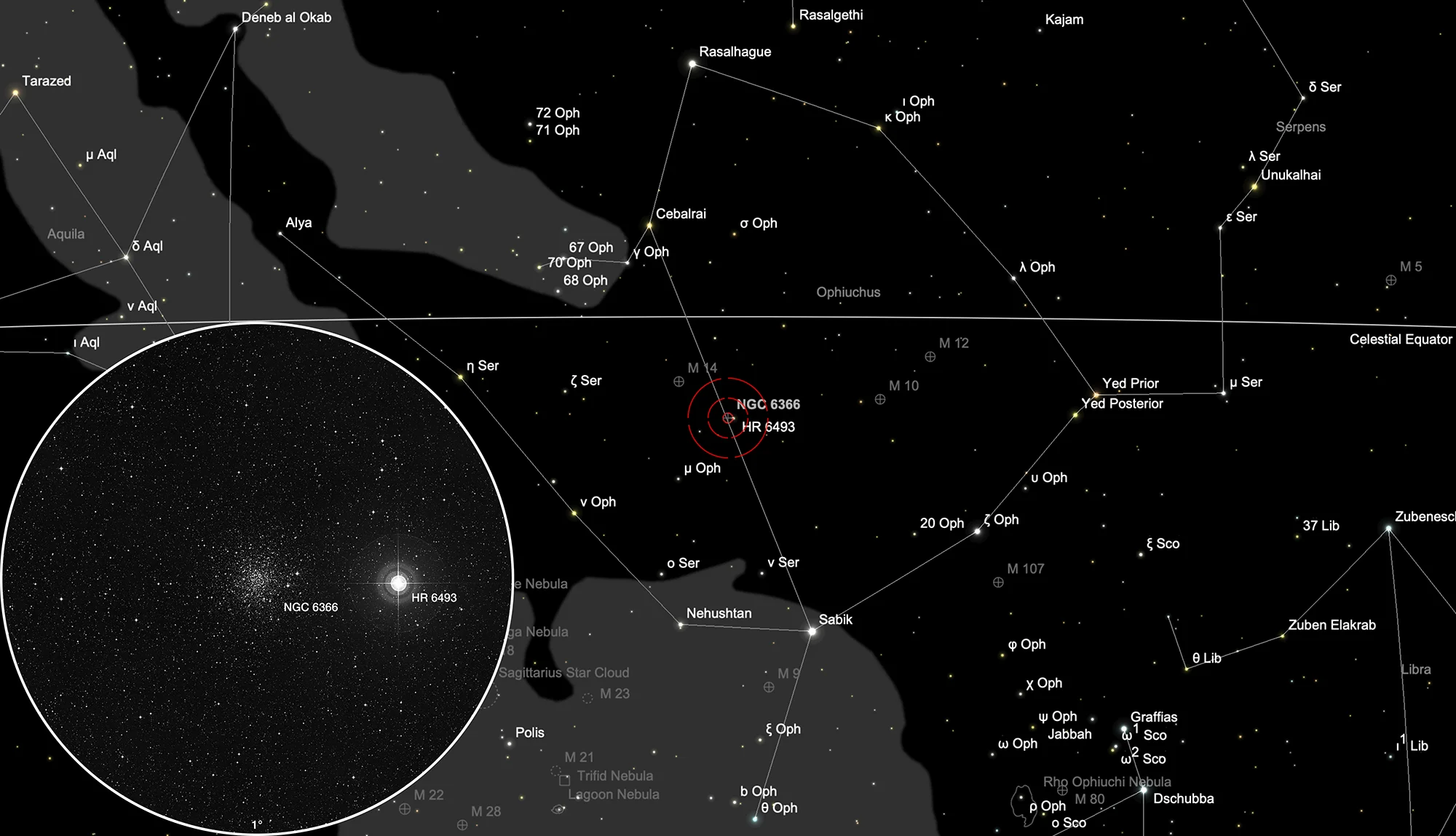Globular Cluster NGC 6366

History
This globular cluster was discovered on 12 April 1860 by the German astronomer August Winnecke using his private 3 inch Merz refractor while he was working at Pulkowo Observatory south of St. Petersburg. [277]
Physical Properties
NGC 6366 is a metal-rich Galactic globular cluster and the fifth closest to the Sun. Its kinematics suggests a link to the galactic halo, but its metallicity indicates otherwise. A presence of second generation stars is not evident. [590]
| Designation | NGC 6366 |
| Type | GCL (XI) |
| Right Ascension (J2000.0) | 17h 27m 44.3s |
| Declination (J2000.0) | -05° 04' 34" |
| Diameter | 13 arcmin |
| Visual magnitude | 9.5 mag |
| Metric Distance | 3.500 kpc |
| Dreyer Description | F, L, vlbM (Auw 36) |
| Identification, Remarks | GC 4301; GCL 65 |
Finder Chart
The globular cluster NGC 6366 is located in the constellation Ophiuchus. The best observation time is in the months February to November.
